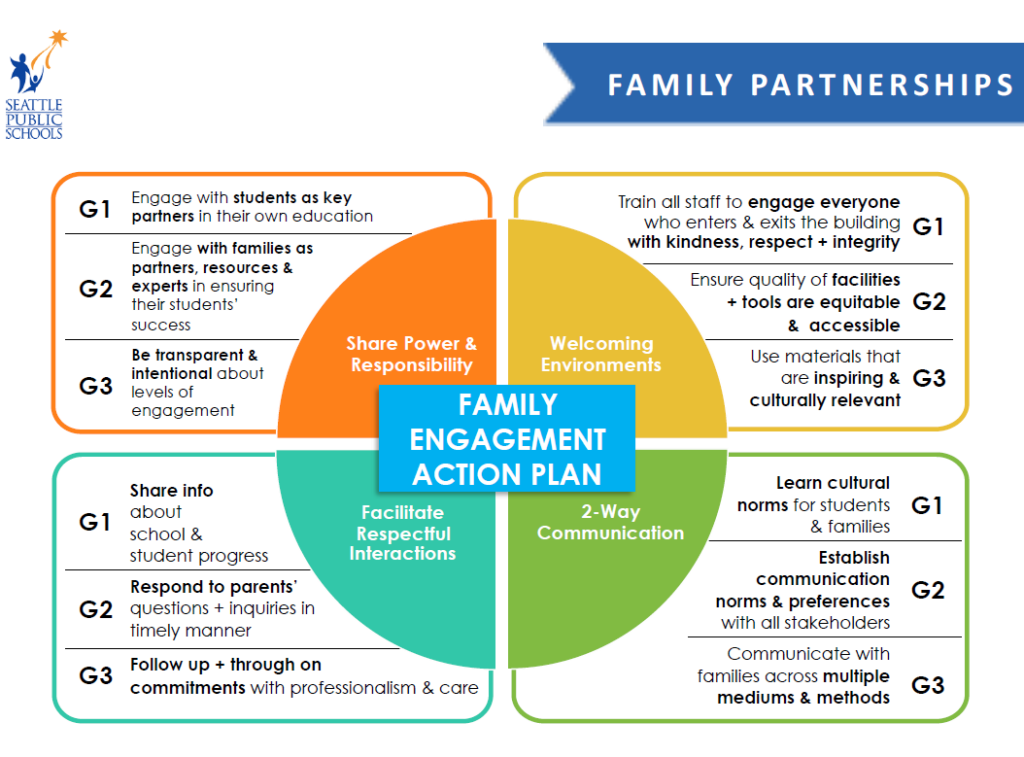Family Partnerships
Family Partnerships and Engagement
Family Partnerships and Engagement is the process used to build authentic partnerships with families between school and home.
Resources
Homework Videos:
Translated homework videos
Giúp Làm Bài Vở -Vietnamese Homework video
Ayudando con la Tarea – Spanish Homework Video
Ka Caawin Shaqada Guriga – Somali Homework videos
功课视频 – Chinese Homework
Qarqaarsa Hugii Manaa – Oromo Homework Video
Tigrigna Homework Video
Pagtulong sa Gawaaing Bahay – Tagalog Homework video
Why Family Partnerships and Engagement?
Families have a major influence on their children’s achievement, in fact, research indicates that parent involvement at home has more than double the impact on student test scores than parents’ education level of socioeconomic status. When schools, families, and community groups work together to support student learning, children tend to do better in school, stay in school longer, and like school more.
Our SPS families are critical partners, please check out opportunities to engage or explore the links to the right!
Definition
Family engagement refers to school-family partnerships. It is the collaborative interaction between educators and families in activities that promote student learning and positive child and youth development at home, in school, and in the community, including but not limited to:
- Regular, two-way and meaningful communication between parents and school personnel
- Outreach to our diverse families
- Parent education
- Staff professional development
- Volunteering at school
- Decision-making and
- Advocacy
Family Engagement is a shared responsibility which is continuous from Kindergarten through 12th grade and reinforces learning that takes place in all settings.
Who We Are
Family Partnerships is a capacity building department whose purpose is to is to support the district, schools, staff, and families to effectively build strong family partnerships and advocacy skills to improve student success and school culture through three key bodies of work: coaching, consulting, and professional development.
Learn more about our Family Partnerships Team!
Who We Work With
- Parent and Family Groups
- School Leaders
- Community Groups
- Community-based Organizations
- District Staff
Our Essential Core Beliefs
- All families have dreams for their children and want the best for them.
- All families have the capacity to support their children’s learning.
- Families and school staff are equal partners.
- The responsibility of building partnerships between school and home rests primarily with school staff, especially school leaders.
The 4 Pillars of Family Engagement
The 4 Pillars of Family Engagement framework was codesigned in 2018 by the Family Engagement Task Force. This task force was comprised of SPS student family members, community-based organizations, school staff, and district staff from across the SPS district. Their mission was to center family engagement to ensure families and schools work together to support and improve the learning, development, and whole health of all SPS students. The pillars and the goals listed within the framework were designed to engage students, families, school and district staff, on a variety of levels and provide an accessible path for creating and maintaining family engagement best practices.
The Main Elements of the 4 Pillars:
- Share Power and Responsibility
- Facilitating Positive Interactions
- Welcoming Environments
- Two-Way Communication

Family engagement work is done through the Dual Capacity Building Framework and Seattle Public Schools’ 6 standards of family engagement.
